Guts N' Gutters #4 (January 2025)
Why you shouldn't set goals, new books and more!
TL;DR (Too Long, Don’t (Wanna) Read)
Crit One 3 Launches Tomorrow!
A Crack in the Code releases February 3rd
Announcing Project Kaiju Husband
FINAL DAY: Monster High Fan Zine Leftover Sale
Returning to Regular Comic Book Yeti Articles
Into the Gutters: Rejecting Goal Setting
Check out Cthulhu Sixes and Wollstonecraft, and go support The Order of Nun-Ya and Who Killed Sarah Shaw?on Kickstarter!
WHAT’S THE WORD?
Zenith - the point in the sky or celestial sphere directly above an observer; the highest point reached by a celestial or other object.
Crit One 3
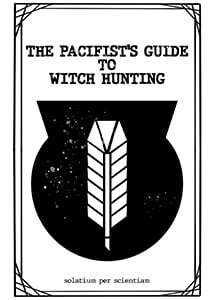
Crit One 3 launches tomorrow! We have a free special mini zine called “The Pacifist’s Guide to Witch Hunting” for every backer in the first 48 hours. Be sure to follow the campaign so you don’t miss it.
A Crack in the Code Pre-Orders Open Now
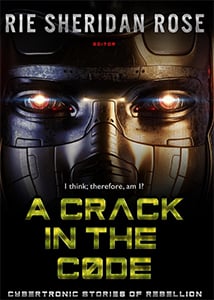
If you missed the campaign, A Crack in the Code is open for pre-orders. It is available on Amazon, but I’d prefer you purchase it directly from the publisher if you’re able.
Project Kaiju Husband
My frequent collaborators (Aaron Brown and Tom Lynott) decided we wanted to do a long-form project. Something just clicks with this team, so I wanted to make something that plays into our strengths and what we like to do. I’m hesitant to give more details until we get some art and the first script is complete (especially since we technically started this in February last year and then lost our mojo a bit), so for now it will be referred to as Project Kaiju Husband.
My goal is for it to be a hilarious, absurdist tale of vulnerability, forgiveness, and accepting help from others. My favorite kinds of stories balance humorous and emotional content (this is why I love Taika Waititi’s work) but I don’t get a lot of opportunities to write them, so I’m incredibly excited.
The Party Never Dies Leftover Sale Ends Today!
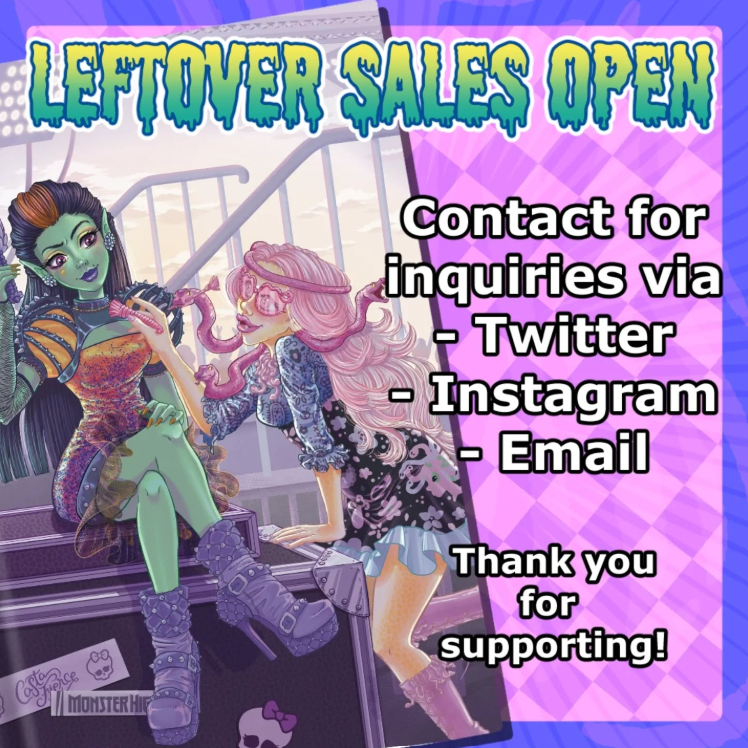
If you missed initial orders and want some fangtastic goodies, be sure to contact the Mods on your preferred platform:
Recent Comic Book Yeti Articles
I kind of fell off with writing for Comic Book Yeti last year and want to mend that. I learn a lot by honing my review craft and I miss digging into the comic industry’s latest releases. So here are some articles and reviews I’ve written recently!
REVIEW: WHO KILLED SARAH SHAW?
Check out my thoughts on Frankee White and Adam Markewiecz’s latest graphic novel!
WHY COMIC LETTERING IS STORYTELLING
I dig into how lettering contributes to a comic’s narrative and is more than just a graphic design skill set. PUT YOUR LETTERERS ON THE COVERS OF YOUR BOOKS!
HOW BLOODBORNE MADE COMICS FROM VIDEO GAME EXPERIENCES
Last year, I reviewed Titan’s latest Bloodborne graphic novel and enjoyed it a lot, so I had to read everything else that preceded it. Little did I know I would be incredibly inspired by the book’s story and art, so this essay is the result of thinking way too much about it.
REVIEW: EC’S CRUEL KINGDOM, ISSUE #1
EC returned via Oni Press last year and this is the next series in their revival. I was mostly blown away by this collection (more on that in the review) and I am enthusiastic to see more.
Krazy Kat
Our editor says the book is moving along. Also, there might be an opportunity to release the book with a publishing partner, so that’s exciting. Nothing much to report this month.
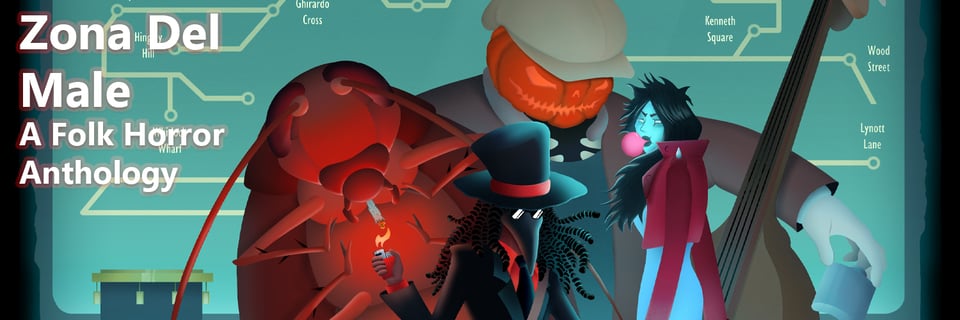
Nothing much to report here as well. The book will launch sometime in February.
INTO THE GUTTERS
Rethinking the Purpose of Having Goals
I didn’t publicly share any resolutions at the beginning of 2024. My brain insists that I did, but digging through my Twitter feed, I see that’s not true. This is strange, but fits in perfectly with what I want to write about this month:
I no longer set goals… or at least, I no longer set them how most people are taught.
In 2023, I’d tweeted five things I wanted to accomplish:
Read more graphic novels, specifically Grant Morrison and Hellboy.
Read more craft books and get better at analyzing works.
Fund one Kickstarter.
Consistent anthology acceptances.
One short story acceptance.
I can’t confidently say that I met any of these goals besides funding a Kickstarter. I didn’t read any Grant Morrison or Hellboy, but I’ve been making those up over the last year. Though I read comics craft books, I’m not sure my reviews got better. The real kicker was that I had ZERO anthology or short story acceptances. Because of this, I wanted to focus on more vague goals for 2024 (which it seems I never wrote down X-D). Just to keep writing and lettering was enough last year and I think I felt more fulfilled because of it.
Before anyone scratches their head too much, I’m not saying that creatives shouldn’t have aspirations or specific things they want to accomplish, but I’m rethinking how I, and society in general, go about success. Recent books and ideas germinating in my brain have led me to believe that the standard way of setting goals is detrimental, especially to artistic folks, for a few reasons.
Focusing on Production
In the writing community, it’s a common meme to set a benchmark for rejections from publishers. The thought behind it is a variation of the Gambler’s fallacy; surely, the writer will get some acceptances if they submit enough. The problem with this mindset is that the creator is in a constant cycle of making and submitting. They must keep creating to meet as many guidelines as possible while avoiding multiple acceptances for the same piece.
Even beyond the writing community, this mindset is baked into American culture. If someone isn’t constantly working toward something, either through their career or personal life, they’re considered lazy. Plus, with the internet and smartphones, it can be nearly impossible to separate work and home. Emails and off-the-clock phone calls from the boss reinforce that one is always working, always chipping away at the next task. Even when work is completely separated from home, the tickle of anxiety can still creep in. I fell for this when I assumed I had set goals (that I’d surely forgotten) for this year.
But this isn’t how it should be, especially for art.
I read a book in 2023 called Rest is Resistance by Tricia Hersey that boldly stated “Urgency is a myth that preys upon your fears about the future”. The author argues that in a world demanding somebody to be constantly on, choosing to turn off is an act of protest. Artists, in particular, should push against this because it inevitably leads to burnout and stifles creativity. Good art requires turning off, even when the world demands otherwise. A creator must be in command of their time and process.
While regular practice is essential, creating good art also requires unproductive time. It requires play and boredom. It requires rest. Sometimes, it requires work without quota, schedule, or a summit to climb (this isn’t saying it requires complete freedom, I’ll write about why later this year). This is how one gets those “happy accidents” ( channeling my inner Bob Ross) that lead to discoveries and inspirations. Constant writing, drawing, or designing hampers these necessary acts and places the artist in an antagonistic spiral with themself.
Self vs. Self
Most Western nations swim in a hyper-individualist mindset. They insist that anything can be (and will be better for the whole) if one betters themself alone. Any failure must be because of some lack of individual effort or oversight, so an artist should always push harder, better, faster, stronger. After all, the artist is only competing with themself, right? So, they must eliminate anything that prevents goals from being met. These ideas have even leaked into practices where they make little sense.
In my experience, there’s been a rise among online audiences and critics who believe that outsmarting media is the same as engaging with it or criticizing it. YouTube channels like CinemaSins come to mind: viewers who seem to think they can “win” at media by picking apart little pieces without examining the whole. What someone wins by approaching criticism like this, I can’t say, but I believe this idea stems from the same individualist culture that demands constant production.
Sadly, this is quite counterproductive. The point of criticism is to have a conversation with art and find interesting ways to interpret it, not best it. Criticism is very much an art of self-reflection through the lens of another piece of art. Those who review like individualist conquerors can’t think deeply about anything because they’re concerned with whatever will “beat” the media fastest and streamline their improvement toward that.
Instead of liking or disliking a story, these critics see it as a stepping stone to display their knowledge, knock down what they see as bad taste, and crown themselves as Lord. To them, art is a thing to be conquered. It’s another reflection of the American Dream where grinding through goals by any means necessary is justified if the top of the ladder is reached. But, truthfully, they’re only competing with themselves and creating bad art because of it. Anyone who falls into this trap of competing with their art is doomed to repeat this.
In a recent video essay by CJ The X (6 Shapes of God), they call this phenomenon an “adversarial mindset” where “everything [is] categorized into things [you] care about and the stupid stuff between [you] and the thing [you] care about.”
A creator pitting themself against some idealized future or their art will inevitably make any setback or missed goal feel like a loss when it should be seen as an opportunity.
For writers specifically, I think it’s even harder as this is baked into common craft wisdom. Phrases like “inciting incident” or “story conflict” are the trade’s bread and butter, but suggest that stories must contain some sort of antagonism to be good. Even young writers are taught there must be a “problem” to solve in a story. But what if it’s reinforcing this adversarial mindset?
Famed sci-fi author Ursula K. Le Guin thought this was something holding back storytelling:
“If you say that story is about conflict, that plot must be based on conflict, you’re limiting your view of the world severely. And in a sense you’re making a political statement: that life is conflict, so in stories conflict is all that really matters.” (From Ursula K. Le Guin: Conversations on Writing).
The first step to becoming a great writer is breaking out of conventional practice and choosing to not be a conqueror. One shouldn’t be creating solely because it moves the needle closer to an aspiration, but because the process is fulfilling. Fulfillment doesn’t always involve productive work or improvement.
Conclusion
All of this is why I will continue (even incidentally) to not set formal goals. I simply don’t find it helpful to my creative process or my career. My aspirations won’t be based on how many pitches I send out, the number of hours I write, or some arbitrary number of acceptances. I don’t want to see my art as something to tackle, but as something to do. I think it’s better to simply keep going, interacting with peers, and becoming a stronger creator because I enjoy making something. The opportunities will come when they come and I believe the way I work will make those opportunities come sooner.
This might not work for everyone, but it works for me and I think everyone in a creative field should question whether the typical narrative of success is desirable or feasible. Life is too short to separate art from joy.
GUTTER BUDS
Shout out to these campaigns by friends and colleagues!
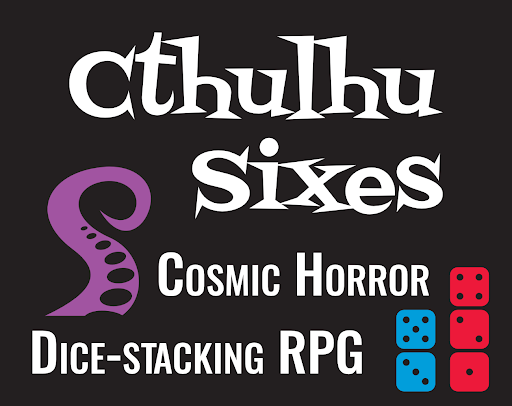
Cthulhu Sixes is a minimalist cosmic horror TTRPG with dice-stacking mechanics, made for #36WordRPGJam.
W. H. Arthur has been a consistent supporter of my projects and I love the games they design. I backed a DMless TTRPG of theirs called Convict-ion last year and also picked up this game. It’s free to download, but you can donate as well. Today is the last day, so go get yourself a new RPG to play!

My colleague CGhirardo has released his latest comic, a dramatization of Mary Shelley conceiving Frankenstein. His art is one of my favorites, abstract but conveying clear emotions. Check it out on Globalcomix!
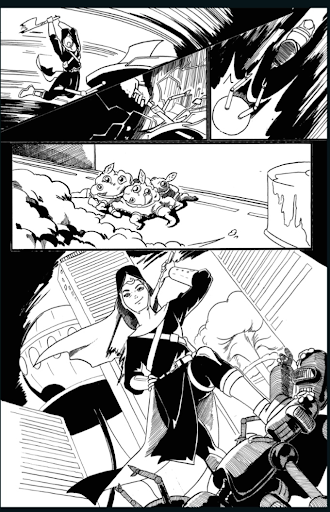
Long after planet Earth stopped being home to humankind, the spaceways sent people deep into alien civilizations. One group found inspiration in a photograph from the past: the 1937 Vatican Rifle Team. The small group began spinning tales of brave Nun warriors who protected all. They started to make the stories into legends and turned those legends into reality.
Chris Solis does some excellent wacky comics and teaming up with Minerva Fox (one of my favorite indie artists) made this a quick pledge. This sounds like plain fun. Go back it on Kickstarter!
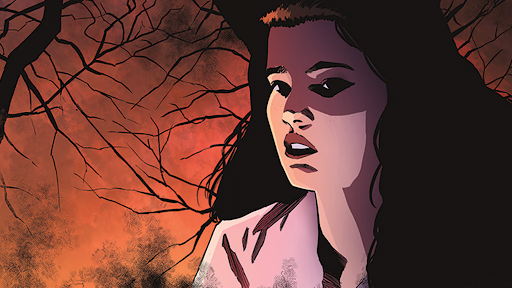
WHO KILLED SARAH SHAW? Follows Jes & Dave, two struggling true crime content creators who insert themselves into a 40-year-old cold case. But secrets like to stay buried. Can they solve Sarah Shaw’s murder, or will they end up in an early grave like her?
Did I mention I reviewed this? Go read my review and then back it on Kickstarter. It’s a marvelous take on true crime and you won’t be disappointed!